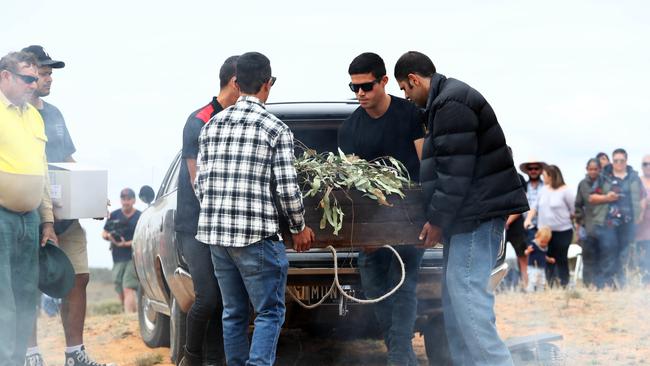‘Keeping place’ can end Mungo Man rift
A ceremonial keeping place for Mungo Man could reconcile an emerging clash between traditional owner wishes for his burial and the desire for continued scientific research into Australia’s oldest human remains.

A ceremonial keeping place for Mungo Man could reconcile an emerging clash between traditional owner wishes for his burial and the desire for continued scientific research into Australia’s oldest human remains.
Proponents say a keeping place at Lake Mungo, where Mungo Man died more than 40,000 years ago, could be a subterranean facility that “places” the repatriated ancestral remains under the earth, but still allow access for authorised research.
The proposal was first raised in the 1980s and attracted concept drawings from esteemed Australian architects Gregory Burgess and Glenn Murcutt. However, it failed to become an integral part of the reburial plan for Mungo Man, whose bones were spotted by geologist Jim Bowler in 1974.
His discovery was hailed as a globally important find, rewriting the history of modern Homo sapiens in Australia. But controversy has arisen over plans by the NSW government to rebury him and 108 excavated individuals in unmarked graves in 26 sites in the Willandra Lakes World Heritage area in the state’s west.
A call for public comment posted last week on the federal Department of Environment website revealed “no markers will be installed to indicate the grave locations and the sites will be returned to existing conditions”.
Professor Bowler said interring them in unmarked graves would effectively destroy 40,000-year-old fossils and dishonour Mungo Man and an earlier discovery, Mungo Woman, both of whom bore evidence of the world’s earliest ceremonial burial rituals. His view is endorsed by historian Geoffrey Blainey, who said Mungo Man and Mungo Lady are “two of the most symbolic people in Australia’s history”, deserving of a “decent and honourable burial … perhaps crowned by a monument”.
The reburial plan was approved in November 2018 by a community-elected group representing Barkindji/Paakantji, Mutthi Mutthi and Ngiyampaa peoples. The National Museum of Australia, which helped repatriate the items, said it “respects the rights of communities to make their own decisions regarding their ancestral remains, on their own terms”.
However, Mutthi Mutthi representative Jason Kelly said a long-documented wish of all three groups was for the building of a keeping place for their ancestors. “Aboriginal history should be told at Mungo, (as) a place of pilgrimage and healing,” he said.
“We can rebury Mungo Man and Mungo Lady, but … with memorials and a commitment to build the keeping place.”
Paleoanthropologist Michael Westaway, employed by NSW National Parks and Wildlife to deliver the concept, said it failed after local disagreement and lack of federal and state government support. Dr Westaway, who studied more than 20 Mungo remains, says further examination using new techniques could reveal “an incredible story of adaptation to dramatic climate change” as Lake Mungo changed from wetland to arid landscape.



To join the conversation, please log in. Don't have an account? Register
Join the conversation, you are commenting as Logout